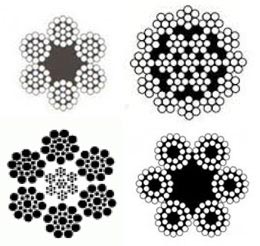There are two main and opposing characteristics of crane wire ropes and Veropes: the resistance to abrasion and flexibility. To a large extent, both traits are a direction of the total numbers of wires in a rope and rope sling. The fewer wires used, the larger the diameters of the wire. This creates better abrasion resistance and also reduced flexibility. As more wires are added, the diameter of the wire is reduced, which increases flexibility and kink resistance, but it decreases abrasion resistance. Scales and wire rope rating charts are great for understanding the relative position for rope and sling construction. This is a great way to understand both flexibility and abrasion resistance. For instance, using an Elephant hoist with the wrong wire rope and rigging supplies is dangerous and should be avoided.
Some of the features and benefits include:
- The ropes and slings promote safety. Ropes have tuff-tags that rate their capacity. It also shows the serial number for identification purposes. Now, ropes are traceable for compliance with OSHA.
- These tools help save money. When compared to steel slings, these ropes are considered the least expensive per capacity. Using either IWRD or EIP ropes gives users a 15% greater capacity than IP, IWRC wire ropes.
- These ropes also save time. There are many combinations of sling terminations. Chokers, thimbles, and hooks are available to fit exact and specific lift requirements.
Some environmental considerations to make include:
- A wire core wire rope should not be used in applications where temperature exceeds 400 degrees Fahrenheit.
- A fiber core wire rope should not be used in temperatures that go above 180 degrees Fahrenheit.
- A fiber core should not be used around degreasing solvents.
Wire Rope